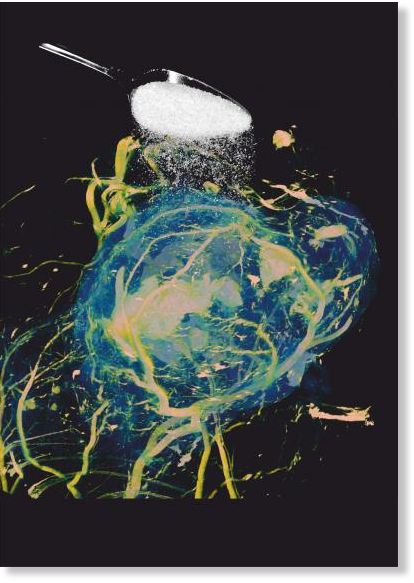OF THE
TIMES
A belief I was destined to find crucial in my Arctic work, making the difference between success and failure, life and death, was the view that man cannot live on meat alone. The few doctors and dietitians who thought you could were considered unorthodox if not charlatans. The arguments ranged from metaphysics to chemistry: Man was not intended to be carnivorous - you knew that from examining his teeth, his stomach, and the account of him in the Bible. As mentioned, he would get scurvy if he had no vegetables in meat. The kidneys would be ruined by overwork. There would be protein poisoning and, in general hell to pay.To the surprise of many (including Stefansson himself), he suffered no health problems during his decade of pure carnivorism. When he told people of his amazing experiences, he was met with skepticism from medical authorities who asked him to undertake a study that would replicate the results. He and a fellow explorer named Andersen agreed to eat an all-meat diet for an entire year in a closely observed setting.
Popular food producers, fast-food chains among them, are already applying various tricks and technologies to create less caloric and more satiating versions of their junky fare that nonetheless retain much of the appeal of the originals, and could be induced to go much further.Among the examples Freedman cites are McDonald's Egg White Delight McMuffin, a "lower-calorie, less fatty version of the Egg McMuffin," a "new line of quarter-pound burgers, to be served on buns containing whole grains," and Carl's Jr.'s "Charbroiled Atlantic Cod Fish Sandwich."


Comment: Read more about the ongoing debate between organic and conventional food and how the Mainstream media launches another phony war against organic:
Organic Food: Cutting Through The Confusion
Debunked: Ridiculous Study Claims Organic Same as Conventional
Sound Science and Common Sense are On the Side of Organics
State of Science Review 'New Evidence Confirms the Nutritional Superiority of Plant-Based Organic Foods'
New 'Study' Based on Crops No Longer Grown, Twists Its Own Results, and Fails to Analyze Other Key Health Benefits of Organic Food
Whoa, Is Organic Food No Healthier Than Non-Organic? Controversy Erupts Over Study
Stanford Scientists Shockingly Reckless on Health Risk and Organics
Cargill and Others Behind anti-Organic "Stanford Study"
Thinking Outside the Processed Foods Box: Health and Safety Advantages of Organic Food